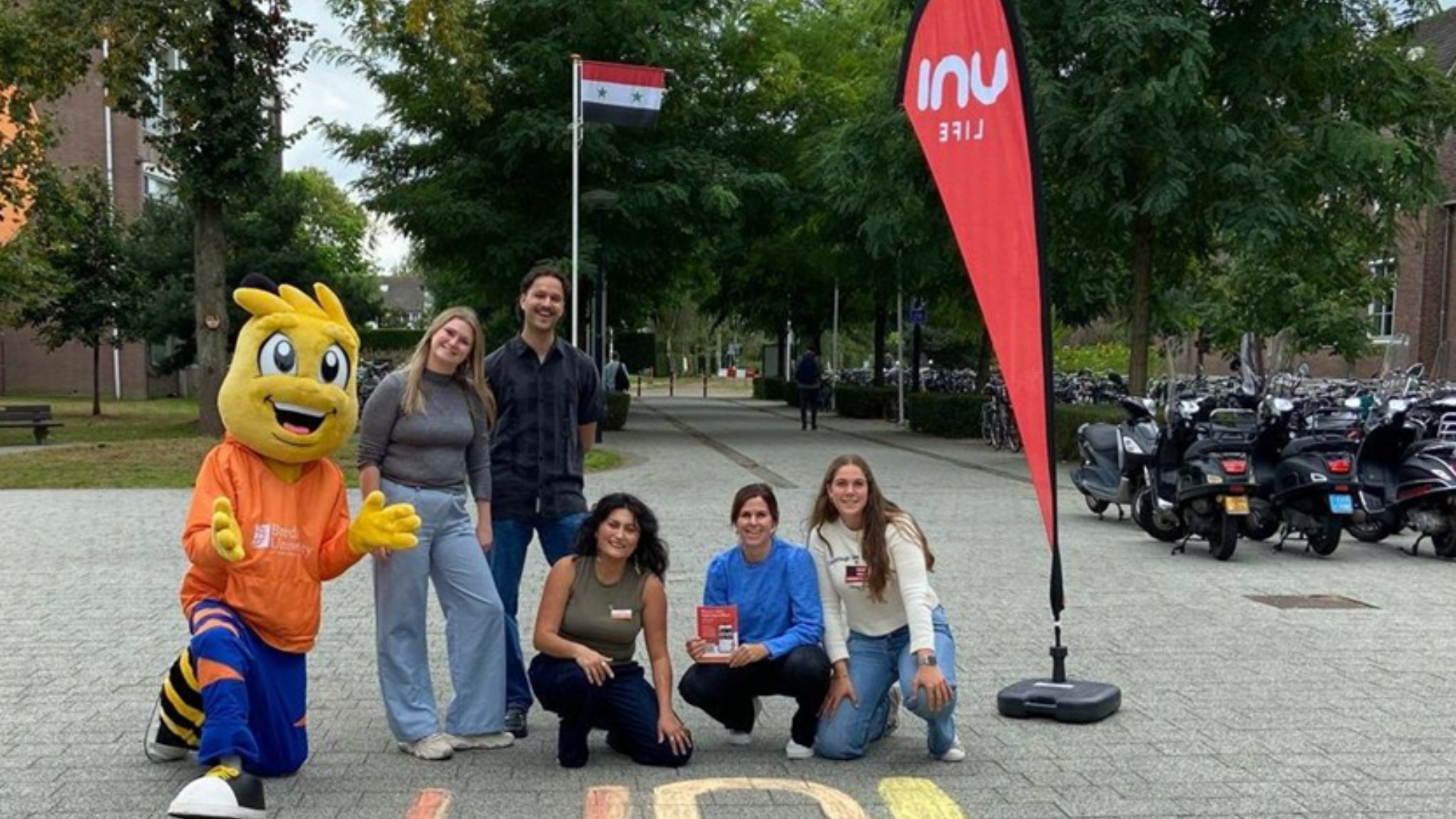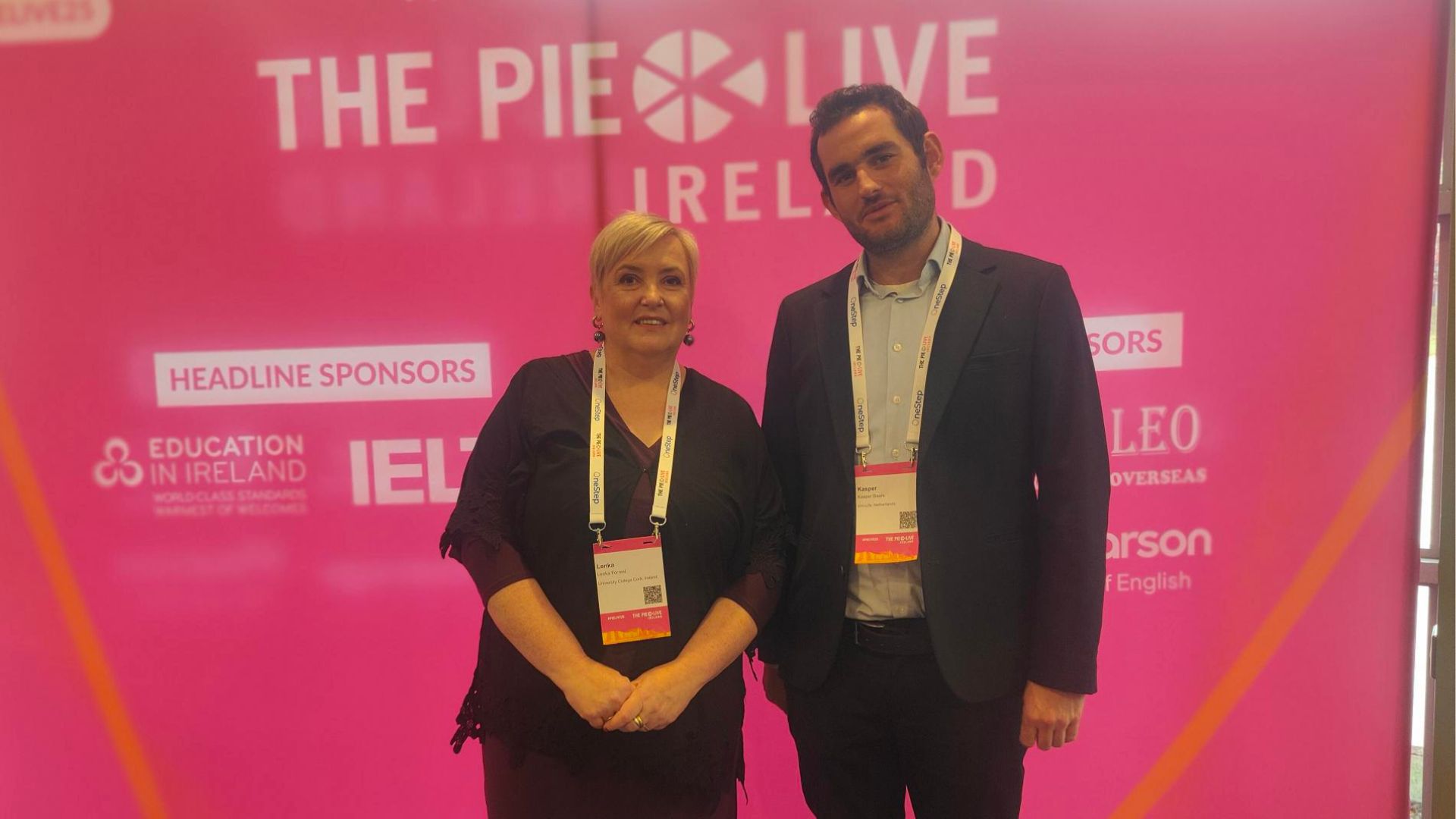
This is where Breda University of Applied Sciences (BUas) started with Uni-Life: a campus-wide social home for current students. The success here paved the way for the later pre-enrolment rollout.
The gap on campus:
On a campus of 7,000+ students from 100+ countries, great things were happening, just not always in one place.
Information lived across portals and posters; students, especially internationals, could miss what mattered or feel alone in the crowd. BUas wanted a single, social home where campus life was easy to find and easier to join.
“The well-being of students is central; we want them to feel welcome and heard here. Additionally, there was a desire for a clear events platform, as the existing portal was too fragmented with too much information. The combination of a social platform and an events overview therefore aligned well with our needs” says Michelle van de Wouw, Lead Student-Community.
One central home for campus life:
BUas launched a student-led community where events, clubs and conversations sit together. By centralising what’s on, students stopped chasing information and started making plans at scale.
Michelle: “We see this collaboration as a way to better connect students with one another and to support them in their social lives. It’s not just important to communicate events, but also to offer a platform that truly connects students with each other (even before they start their studies!).”
A light-touch operating model keeps things simple: from day one, a named community manager has kept moderation, engagement and campaigns humming in the background, reducing workload for the BUas team.
“We liked that we had a dedicated community manager, and the possibilities for development were appealing. Everything was provided so we could run a strong campaign,” said Michelle.
Most importantly, it delivers belonging you can measure: connection, safety and participation all rise, and clubs and events are easier to find and join.
What changed on campus:
The campus hub shifted from noticeboard to social home. After launch, over 2,200 student profiles were created, students started 1,100+ chats and exchanged nearly 8,000 messages, opening 400+ threads along the way.
With nearly 50 clubs and associations listed, joining (or starting) a community became the default, not a scavenger hunt. As one staff member observed, “The chat is used a lot. Connections are definitely made, and events are added regularly. Students clearly understand the purpose of the app - it is seen as a social platform.”
Students feel the difference in everyday ways: “It keeps people in the loop about events they wouldn’t have easily known about,” wrote one. Another said, “It makes you feel closer to other students and the university.”
That shows up in the data too. Events became the heartbeat: 274 events (about 25 per school month), and more than two-thirds of users rated events the most valuable feature. BUas now routes student events into Uni-Life (and amplifies them via Instagram, campus screens and a weekly newsletter), making discovery simple and consistent.
The evaluation highlights outcomes students actually feel: 75% say they feel more connected and more at home on campus, with a greater sense of safety and freedom to be themselves.
Platform patterns back that up: 83.8% reported discovering more events, 34.1% attended more events because of Uni-Life. The homepage is actively used for socialising and asking questions: over 400 threads have been started since launch. 40.5% cite sense of community as their main reason for using it, and 36.4% joined a club through the platform. More importantly, there have been no safety incidents have been reported, reinforcing a moderated, trusted space where students actually want to spend time.
Looking ahead:
BUas will keep the Uni-Life platform at the centre of student life - continuing to centralise events/clubs, growing interest-based groups and using multi-channel promotion, while keeping the experience low-lift for staff through ongoing community support. “I’d recommend it because it brings all students together, stays interesting thanks to events, works for both prospective and current students, is user-friendly, low-threshold, and really fits today’s times - where students sometimes need a nudge to connect socially,” says Michelle.
.jpg)


